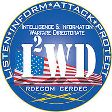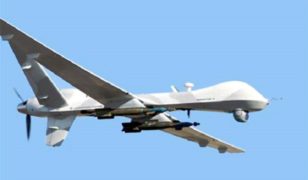Army CERDEC I2WD posts RFI for modular open frequency radio architecture
 On March 28, the U.S. Army posted a request for information on Modular Open Radio Frequency Architecture (MORA) (Solicitation Number: W56KGU16RA311). All white papers pertaining to this RFI shall be submitted no later than April 28, 2016, 5:00 PM EDT.
On March 28, the U.S. Army posted a request for information on Modular Open Radio Frequency Architecture (MORA) (Solicitation Number: W56KGU16RA311). All white papers pertaining to this RFI shall be submitted no later than April 28, 2016, 5:00 PM EDT.
The U.S. Army Communications-Electronics Research Development and Engineering Center (CERDEC) Intelligence Information Warfare Directorate (I2WD) is seeking information on how an interested contractor could implement a converged Command, Control, Communications, Computers, Intelligence, Surveillance and Reconnaissance (C4ISR) and Electronic Warfare (EW) architecture which maximizes the use of open architectures and standards, reduces size weight and power (SWaP), and facilitates the use of common radio frequency (RF) component types across communications and EW technologies on Army platforms.
The U.S. Army CERDEC established the Hardware/Software Convergence Working-Level Integrated Product Team (HW/SW-WIPT) to develop and execute a detailed plan to achieve a modular and open family of hardware and software components for implementing interoperable C4ISR/EW capabilities on Army platforms.
The plan defined by the HW/SW-WIPT matures the following standard specifications by developing reference implementations and conducting a series of incremental demonstrations:
• OpenVPX: Backplane standard that uses serial fabrics with a high density connector, coupled with a systems level approach that defines standard profiles for pins, protocols, and interconnections. Additional information is available at http://www.vita.com/.
• Vehicular Integration for C4ISR/EW Interoperability (VICTORY): Defines a network-based data bus called the VICTORY Data Bus (VDB) to integrate C4ISR/EW and platform systems on Army ground vehicles. Additional information is available at http://victory-standards.org/.
• Modular Open RF Architecture (MORA): Extends VICTORY to support radio frequency (RF) systems. Decomposes monolithic radio systems into high-level components with well-defined functions and interfaces. Component types include Software Defined Radios (SDRs), RF Conditioning & Distribution (RCDs), and Radioheads (RHDs). A RHD is typically the integration of the antenna (or multiple antennas) and RF conditioning circuits such as power amplifiers (PAs) and/or low noise amplifiers (LNAs). RCDs may exist between RHDs and SDRs. MORA also defines a low latency high speed bus, called the MORA Low Latency Bus (ML2B), to minimize platform discrete signaling needs.
• REDHAWK: Software framework and associated interfaces intended to facilitate the development, deployment, and management of SDR applications. Additional information on the REDHAWK framework and associated interfaces is available at http://redhawksdr.github.io/Documentation/.
The primary purpose of this RFI is to get feedback on the draft MORA V2.0 specification in support of HW/SW Convergence and other initiatives. Specific topics of interest include, but are not limited to:
1. Software Defined Radio: Information on existing designs and the level of effort to transition those designs into MORA compliant designs which would utilize VDB and ML2B networks in future modular system implementations
2. RF Conditioning & Distribution: Information on existing designs and the level of effort to transition those designs into MORA compliant designs which would utilize VDB and ML2B networks in future modular system implementations
3. Radiohead: Information on existing designs and the level of effort to transition those designs into MORA compliant designs which would utilize VDB and ML2B networks in future modular system implementations
4. MORA Signal Port interfaces (Analog & Digital, Receive and Transmit) including the incorporation of VITA 49.2 context, control, and data packets for Digital IQ signal representation
5. Use of VITA 49.2 for digital RF distribution of data, context, and control between chassis resources and an advanced Radiohead which may host the traditional RF front end circuitry as well as advanced functions such as frequency conversion, digitization, and waveform generation
6. Off-the-shelf application software for processing RF signals in digital IQ format (VITA 49.2)
7. MORA Processing Port interfaces including possible Radiohead on-board processing to alleviate pre-detection data traffic (e.g. DF, spectrum FFTs)
8. Software development frameworks and operating environments for RF applications and waveforms
9. Use of REDHAWK in conjunction with hardware acceleration such as field-programmable gate arrays (FPGAs) and digital signal processors (DSPs)
10. The combined use of the VDB for resource management and the use of the ML2B for low latency control messaging in a multi-enclave environment
11. The roadmap for Ethernet switches and IP cores that can support 40 Mbps and 100 Mbps for low latency messaging and potentially large digital data transfers from Radiohead(s) to/from resources in an OpenVPX chassis or local area network
12. Use of 10/40 Gigabit Ethernet to provide low latency, deterministic, and reliable messaging
13. The roadmap for advanced time synchronization protocols where highly accurate knowledge of time can be achieved without signal hardlines
14. Information on low SWaP-cost N-channel topologies and implementations that might be integrated into future Radioheads
15. Comments regarding CERDEC’s converged architecture consisting of OpenVPX, MORA, VICTORY, and REDHAWK
Full information is available here.
Source: FedBizOpps








